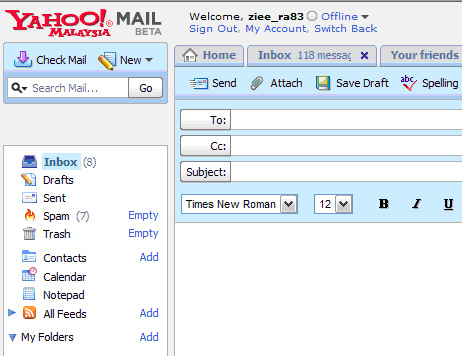



TOP
DEFINITION
-
An e-mail attachment
(or email attachment) is a
computer
file which is sent along
with an
e-mail
message.
-
It also
knowing as MIME (
Multipurpose Internet Mail Extensions )
-
The
file may be sent as a separate message, but now it is almost
universally sent as part of the message to which it is
attached.
-
Attached messages may be sent
in unencoded form, or encoded in a number of ways:
base64,
binhex,
uuencoding,
quoted-printable.
-
In
MIME,
the standard
Internet
e-mail format, messages and their attachments are sent as a
single
multipart message, usually
using
base64
encoding for non-text attachments.
Worms and
viruses are
often distributed as attachments to e-mail messages. With
vulnerable e-mail programs the virus may be activated by
viewing or previewing the message; more robust programs only
allow infection if the user opens the attachment for
execution. Unexpected e-mail with attachments should always
be considered suspicious and dangerous, particularly if not
known to be sent by a trusted source.
Some mail services and software filter out potentially
dangerous attachments such as
executables and
scripts, although
more expert users may find this limitation a nuisance.
Viruses in attachments to or the body of e-mail may be
scanned for and dealt with by
anti-virus software
running on the host computer, mail client software, and mail
and Internet service providers, although non-detection of a
virus does not guarantee a message to be safe.
Mail services have a limit on the size of messages which may
be sent and received; this limit may restrict the size of
files to be attached. Messages of excessive size will
usually be returned to the sender as undeliverable. This
usually happens to attachments with a total size of over 30
MB.
As size of exchanged documents increase, the current
limitation on email attachments prompted the industry to
create solutions to deliver large email attachments. A first
alternative was to set dedicated ftp servers so as to
overcome this size limitation. The problem was that few
corporate firewalls allow the ftp protocol, thus limiting
the impact of such solutions. Hence following solutions
relied on the HTTP protocol to be more firewall friendly and
to provide a more accessible interface from the Internet.
The size limitation thus moved from 30 MB set by the email
servers to 2GB set by the web servers. Current email
attachment replacements support maximum size of 100MB to
2GB. But the size of exchanged files keeps increasing at a
very fast rate. Some companies now support delivery of files
of unlimited size, using for instance a Java based file
transfer agent.

HOW TO USE ATTACHMENT
- STEP BY STEP -
With the advent of an
Internet protocol called
MIME, Multipurpose
Internet Mail Extension,
and other types of encoding
schemes,
you can send formatted
documents, photos, sound and
video files as attachments
to your e-mail messages.
The procedure for attaching files varies
depending on the type of e-mail program you use.
In general, you click on an icon, such as a
paper clip, located on the toolbar of the
program.
We
will be showing you how to use
Attachment services by Yahoo.
COM, but the same ideas
applied
from other
web-based email providers.
1. Open your
Yahoo email address,
launch a new
message window and compose
your message.

 2.
Click the attachment icon (the paper
clip). 2.
Click the attachment icon (the paper
clip).
3. After
you click this button, the file where you want
to send will be appear.
Browse your hard drive or removable disks to
locate the file you want to attach.
4.
An
icon or message should now appear
indicating that the file has been
attached.
5.Finally,
click the Send button and off
it goes.
|



